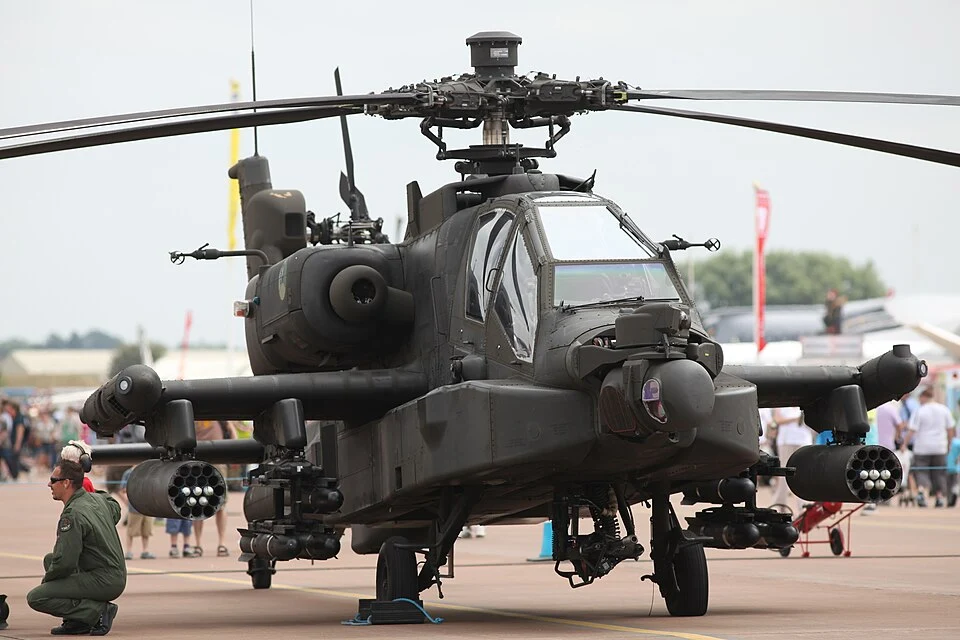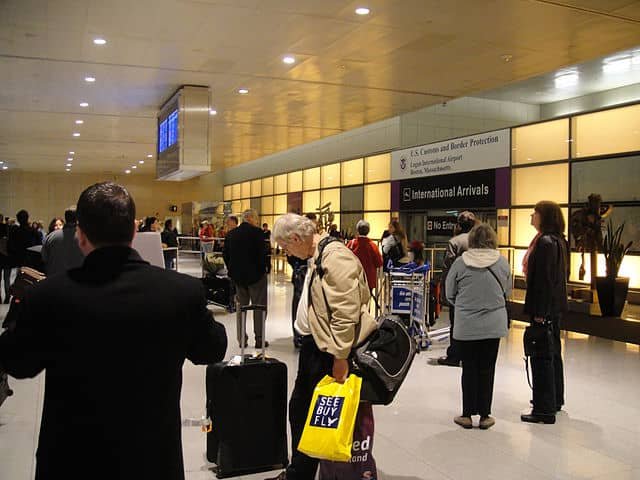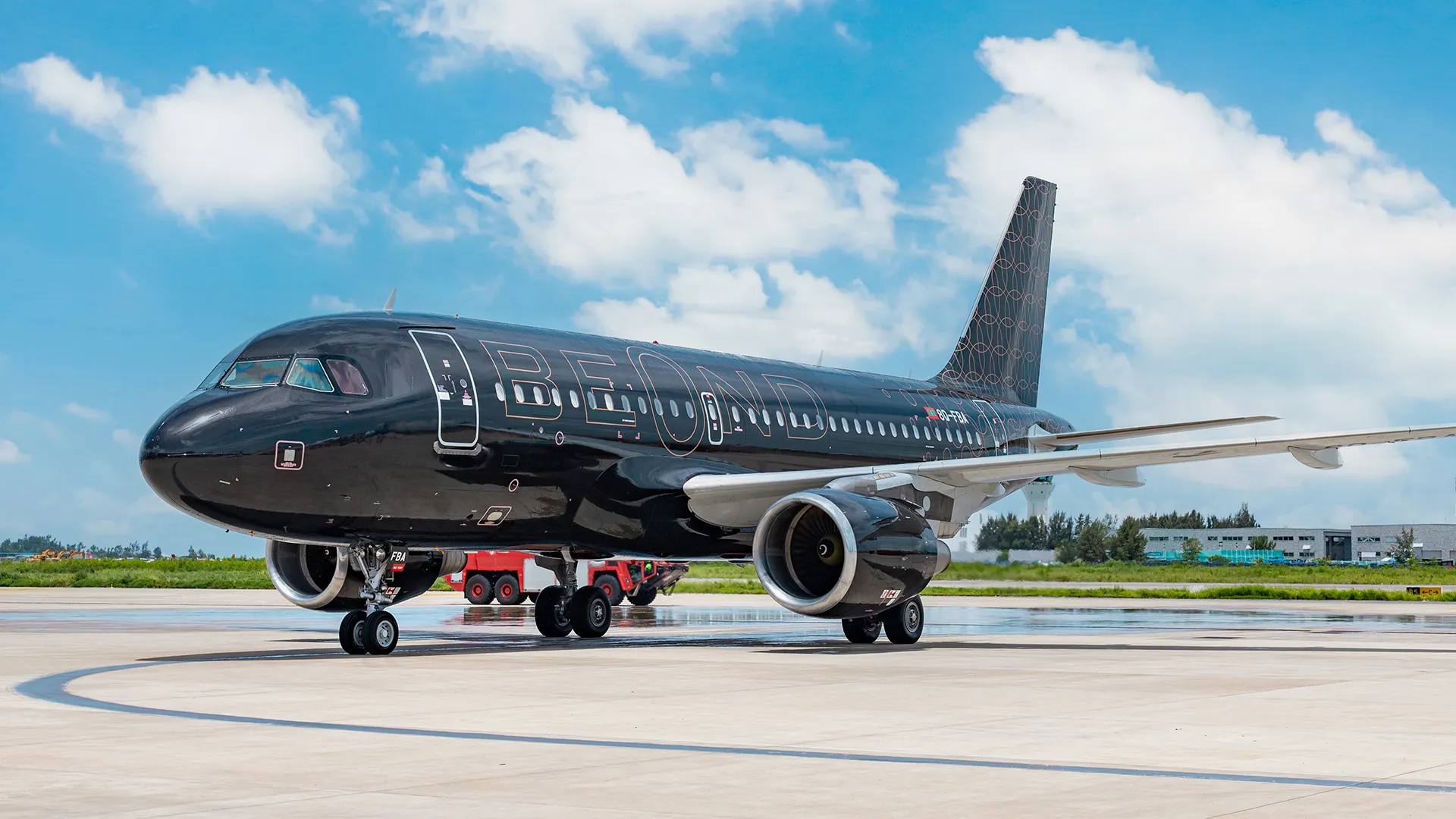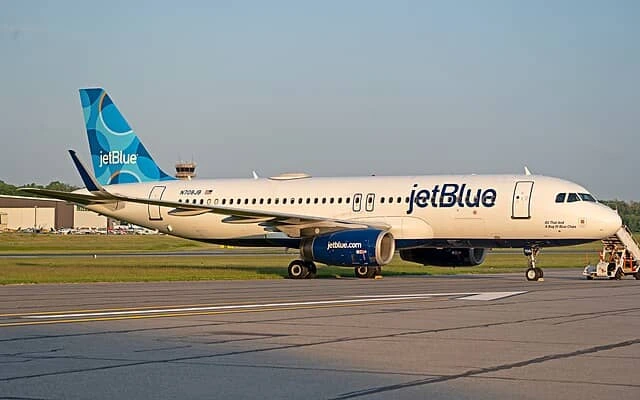Air India 787 Crashes After Ahmedabad Takeoff, Dozens Feared Dead
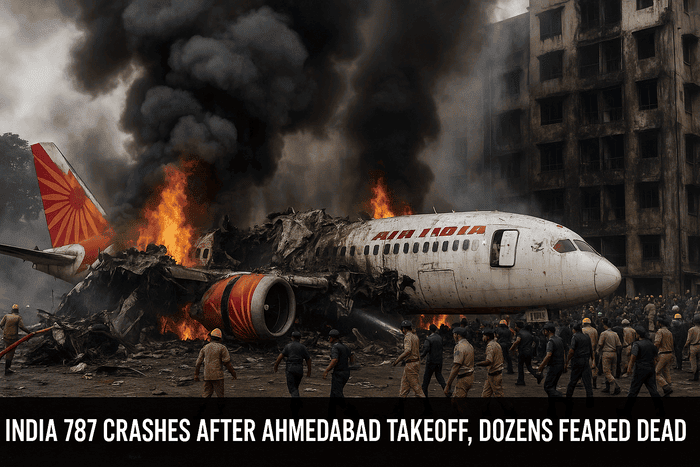
Overview of the Tragedy
On 12 June 2025, Air India Flight AI-171, a Boeing 787-8 Dreamliner registered VT-ANB, crashed shortly after taking off from Sardar Vallabhbhai Patel International Airport in Ahmedabad, India. The London-bound aircraft, carrying 242 occupants—comprising 230 passengers (including 11 children and 2 infants) and 12 crew members—plunged into the Meghani Nagar neighborhood roughly nine minutes after departure at approximately 13:38 local time. The aircraft struck a doctors’ hostel adjacent to B.J. Medical College, erupting in flames upon impact and sending thick plumes of black smoke skyward. At least 30 fatalities have been confirmed so far, with rescue teams still working to locate survivors amid the wreckage.
Flight and Aircraft Details
Flight AI-171 departed Ahmedabad en route to London Gatwick, expected to land at 18:25 local time in the UK. The Dreamliner involved was manufactured in late 2013 and entered service in January 2014. It had logged over 11 years of operations without any major hull-loss events. Notably, this marks the first fatal accident involving a Boeing 787 series aircraft since the model’s commercial introduction in 2011. The aircraft’s transponder transmitted an altitude of just 625 feet before all communication ceased; shortly before that, the crew issued a “Mayday” distress call at 13:39 local time, indicating a severe, rapidly developing emergency.
Passengers and Nationalities
Among the 242 occupants were 169 Indian nationals, 53 British citizens, seven Portuguese nationals, and one Canadian traveler. Reportedly, the passenger manifest included former Gujarat Chief Minister Vijay Rupani, traveling in an official capacity. The 12-member crew comprised two pilots and ten cabin attendants. Casualty figures remain fluid: as of this writing, thirty bodies have been recovered, and dozens more may still be trapped under debris. Injured survivors have been rushed to nearby hospitals in Ahmedabad for critical care.
Impact Zone and Immediate Response
The Meghani Nagar cratered site lies a few miles north of the airport perimeter. Eyewitnesses described hearing multiple explosions followed by towering plumes of clouds of smoke that spread across adjacent residential blocks. Emergency services—comprising more than seven fire tenders and multiple ambulance units—raced to the scene under the direction of the Ahmedabad Fire and Emergency Services Department. Roads surrounding the crash site were cordoned off to facilitate rescue operations. India’s National Disaster Response Force (NDRF) deployed additional search-and-rescue teams, while local volunteers assisted in the early hours of the response.
Government and Leadership Reactions
Indian Prime Minister Narendra Modi expressed profound grief on social media, stating:
“The tragedy in Ahmedabad has stunned and saddened us. It is heartbreaking beyond words. In this sad hour, my thoughts are with everyone affected by it.”
He confirmed that central and state authorities were coordinating relief efforts “on a war footing.” Indian Home Minister Amit Shah spoke with Gujarat Chief Minister Bhupendra Patel, directing immediate rescue and medical support. In the United Kingdom, Prime Minister Keir Starmer described the crash as “devastating” and activated crisis response teams to assist British nationals and their families. The UK High Commission in New Delhi pledged full support and liaison with local authorities to ascertain facts and provide consular assistance.
Air India and Corporate Statements
Air India Chairman Natarajan Chandrasekaran issued a statement on X (formerly Twitter), offering “deepest condolences” to the victims and pledging the airline’s “fullest support” to families and authorities involved in rescue. An emergency operations center was established at Delhi headquarters to provide real-time updates. The airline suspended all flights from Ahmedabad Airport pending clearance from investigative teams and the Directorate General of Civil Aviation (DGCA). Tata Group, Air India’s parent, echoed solidarity with those affected and committed resources toward relief and rehabilitation.
Investigation Underway
The Aircraft Accident Investigation Bureau (AAIB) of India, under DGCA oversight, has launched a full probe. Preliminary inquiries will examine flight-data and cockpit-voice recorders, maintenance logs for VT-ANB, fuel-loading procedures, and air-traffic-control recordings. Boeing representatives are cooperating with investigators. Meteorological data indicate clear skies and calm winds at the time of takeoff, making weather an unlikely primary factor. Experts caution, however, that the complexity of modern jetliners means multiple systems could interplay in a catastrophic failure. The AAIB expects preliminary findings within 30 days, with a final report scheduled in 12 months.
Aviation Safety Context
India’s aviation sector has seen significant expansion but has also faced safety challenges: the last major Air India hull loss occurred in 2020 with Flight 1344 (Air India Express) in Kozhikode. Globally, the Boeing 787 has enjoyed an enviable safety record, though this crash represents a sobering exception. Regulators and carriers worldwide will closely review the AAIB’s findings, scrutinizing the Dreamliner’s fuel-management systems, flight-control architecture, and redundancy measures. This incident may prompt fresh audits of aging 787-8 frames, particularly those over ten years old.
Humanitarian and Long-Term Implications
Beyond technical and regulatory outcomes, the crash underscores the human cost of aviation disasters. Families in India, the UK, Portugal, and Canada await news of loved ones; many community groups and charities have offered counselling and support hotlines. In the longer term, the tragedy will likely influence Air India’s training regimens, crisis protocols, and fleet-upgrade strategies. Public confidence in the Dreamliner may dip, potentially affecting airline fleet decisions and secondary-market values for older 787-8 models. Globally, safety authorities may reassess risk-mitigation frameworks, from pilot automation-override procedures to airport emergency readiness drills

